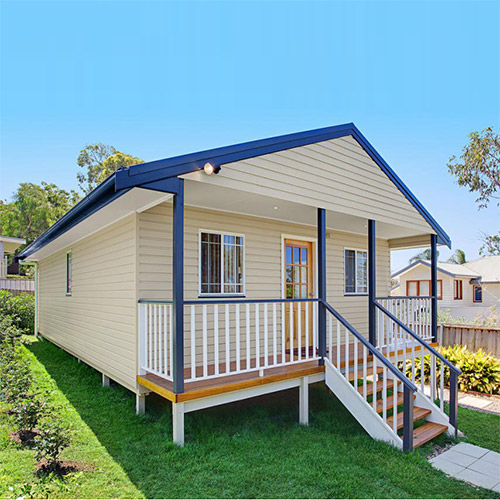
Are you planning to finally have a place of your own? If yes, then you might be worried about how much this will cost you. Or, you might be renting and already tired of paying monthly bills and thinking about how you can live more efficiently.
What if we tell you that there’s a way that you can have your own house at a really affordable price?
Yes, you read that right! It’s called a prefabricated home. You might have heard it somewhere. Others call it a prefab home or simply prefabs.
Did that catch your attention?
This article will explain the different types of prefabricated homes, how much to build them, and tips on building one.
Read on!
To start, let’s define what a prefab home is. A prefab home is made in sections in a home-building facility. Then, it is shipped and assembled in the owner’s home site.
Think of it as a Lego house. Each section of the house is built in a factory and shipped to your location where you or some workers assemble the entire house for you. Just like Lego blocks, parts are already pre-made. You can either assemble them on your own or have a professional prefab home builder to complete the construction for you.
Now that you understand what a prefab home is, let us share with you why you should get one!
You might think that you are going to spend a lot more when building a larger prefab home. But that is simply not true. A prefab home costs about 20% or even less a customized stick-built type. To give you a better idea, we will discuss the pricing further later in this post.
So you see, a prefab home offers a lot of benefits aside from saving from the expenses. If you’re already thinking about getting one, let’s take a look first at the different types of prefab homes:
Who said you can’t have luxury injected to functionality? The villa design is a great choice if you don’t want to scrimp on the design principles.
This prefab home is also great if you have a growing family. The villa type allows you to add more bedrooms as your family grows. Some areas can be converted into another room when there is an addition to your family. Aside from the bedrooms, this house often has large and airy communal spaces where your family can have activities together.
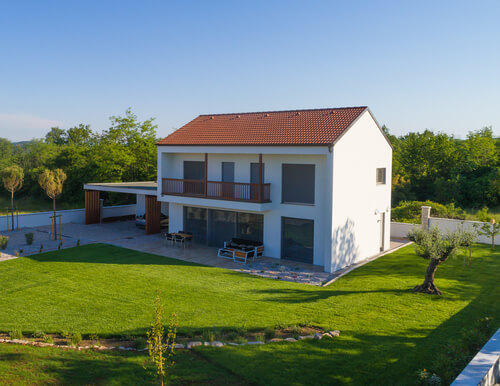
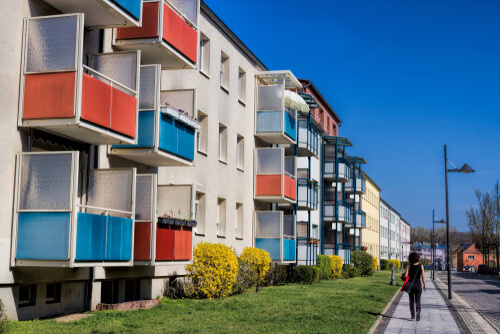
A row house may not be as spacious as the villa but it sure does highlight energy efficiency. This also provides you with an area where you can have a small backyard or front lawn.
The beauty of a prefab row house is that you can create unique designs even with limited lot space. What you can’t wide, you can extend upwards. If you are aiming for sleek designs with clean lines, the row house type might be the perfect house for you.
A cabin is well-suited for a holiday house up in the mountains or near the beach. If you opt to have a traditional feel to your house, the cabin design might be the one. As a vacation home, you only need fewer energy requirements to make this home up and running. A typical cabin can be up to 150 square meters wide.
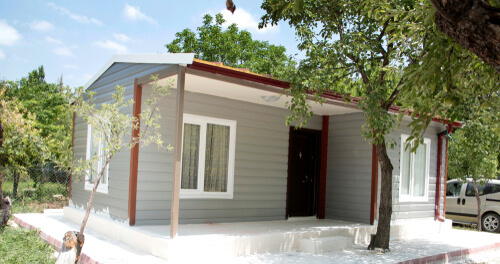
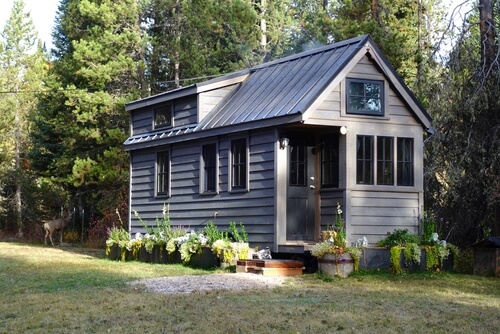
A tiny house is one of the coolest things in construction nowadays. It rides on the minimalist idea and strips the owner to bare essentials. One housing market that is gaining traction now is those who live alone who only want the basic necessities. If you are one of them, then you might want to consider this design.
Take note, this type often has 1- 1.5 floors and with 20-80 square meters wide. This means that storage space may be an issue. That being said, each centimeter counts. But, hey! Challenging as it may, this type often has spectacular interior designs.
A modular home is manufactured by rooms or modules in a climate-controlled factory and then shipped to the site where it will be permanently and completely installed.
Each module is already complete with fittings and components. If you go with this design, workers will only need to assemble modules together to create your home. You don’t have to worry about your plumbing, interior fittings and cabinetry as these are included in the package.
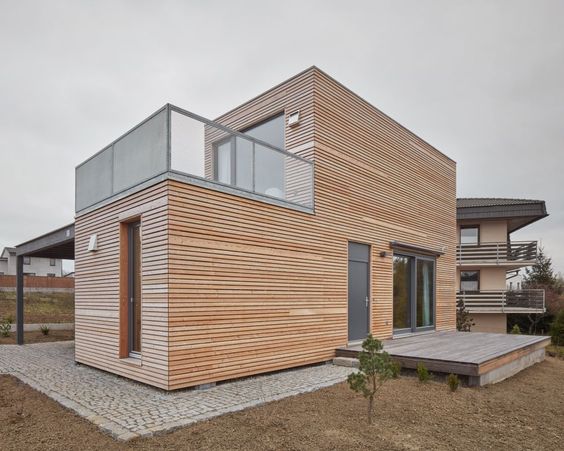
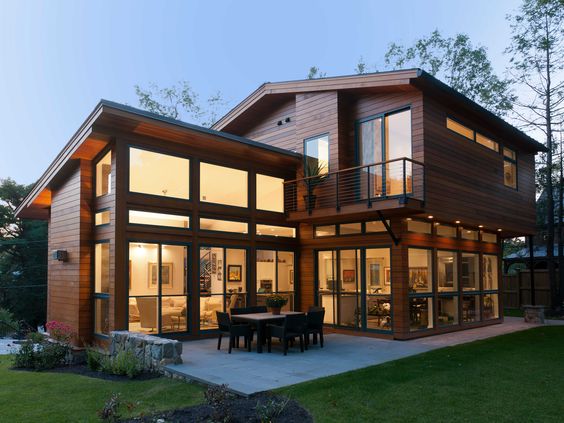
A panelized home is manufactured off-site with windows, doors, and wiring already intact. These panels are connected to other panels to create rooms. For example, a wall can have three or more panels depending on its length. Workers install these panels on your site.
While this type requires more work than the others, a panelized home offers the most customization. This allows you to have wide-open spaces and high ceilings, something that other prefab styles cannot create.
A precut home is also called a kit home. It is designed and cut in a factory and transported to the site for assembly.
This prefab home is suitable if you are a type of DIY person because everything, including instructions and parts, is shipped to you. You get to work on your home or, for your convenience, hire a contractor. Think of an Ikea project but on a larger scale. Your prefab home would follow the design of the kit. That being said, unfortunately, there is little customization you can do.
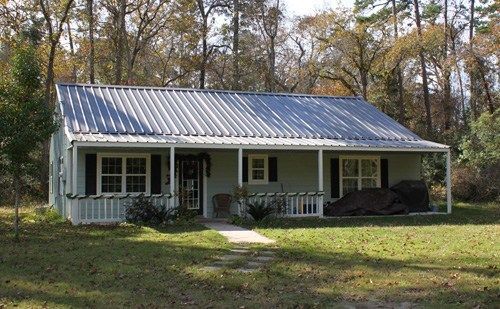
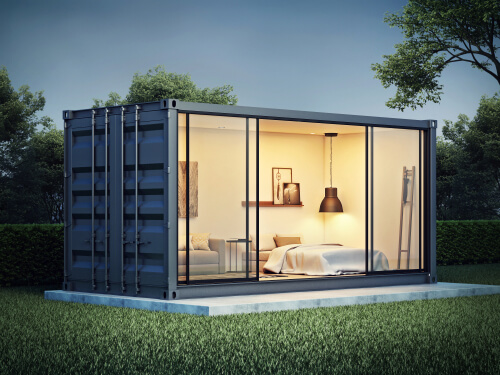
This is a prefab home made of new or refurbished shipping containers. The design has become a hype nowadays because you can stack shipping containers to create a multi-level residential dwelling. This may be the strongest prefab home but this must still follow local building codes and restrictions.
This time, we’ll show you how much you are going to spend when buying a prefab home. Aside from buying the house itself, there are also other expenses, like the building process, installation, and delivery of your home.
According to Home Advisor, a very simple prefab home costs you more or less $100,000. This is with a guaranteed area up to 1,100 square feet.
You would only spend less than $300,000 for a custom-made prefab home. Per square foot, you’d probably spend less than $200 with custom features already! You could have it lesser if you prefer the standard design. Building a stick-built house will cost you double or even triple! Please note, this cost does not include the value of the site itself.
Take a look at the approximated cost of prefab homes below:
Square Footage
Standard Cost
(in USD)
Cost of Maximum Add-ons (in USD)
Delivery Costs
(in USD)
Total (in USD)
1
40-80
50-120
55-125
100-200
1,000
40,000-80,000
50,000-120,000
55,000-125,000
100,000-200,000
1,500
60,000-120,000
75,000-180,000
82,500-187,500
150,000-300,000
2,000
80,000-160,000
100,000-240,000
110,000-250,000
200,000-400,000
When you discuss with a prefab house manufacturer, you are going to hear different terms to describe prefab home pricing. It would really help if you are familiar with them.
This is the base price. No customizations are done on your prefab home. You are basically quoted the cost of the per square foot of your prefab home.
What is not included:
– Delivery costs
– Customizations
Average Price per Square Foot (in USD): $50
This is the price given to you when extra work is done to your prefab house in the factory aside from the cost of manufacturing the house. This includes finishes, additional structures and some other customizations you wish the manufacturer includes in the house.
What is not included:
– Delivery Cost
– Work at the site
Average Price per Square Foot (in USD): $60
This price includes the cost of setting up the prefab house on your site. Also included in this price the cost of manufacturing the home, its customizations and delivery.
What is not included:
– Utilities
– Touch-up Cost
– Foundation
Average Price per Square Foot (in USD): $65
This price includes everything that has been mentioned previously as well some prep work on the site such as site works, preparation of foundation and touch-ups.
What is not included:
– Taxes
– Fees
– Property cost
Average Price per Square Foot (in USD): $110
Apart from buying the prefab home, you also have to pay for the building, delivery, and installation. Here is a rough estimate of the costs of building and transporting a prefab home:
Transportation
$5,000-$15,000
Land Preparation
$1,250-$4,000
Foundation
$4,000-$13,000
Installation
$25,000-$50,000
Utility Construction
$3,000-$20,000
Taxes
$5,000-$10,000
Permits and Fees
$500-$5,000
Additions
$7,500-$50,000
Sub Total
$51,250-$167,000
Source: Home Advisor
So based on the table above, if you have a 1,800 square ft home that will cost between $72,000- $144,000. Adding the building costs, you are going to pay a grand total between $123,500-$311,000 for your prefabricated home.
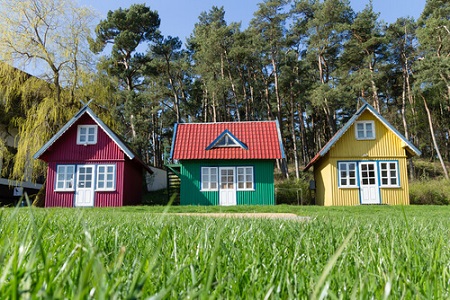
So far, you already have a good idea what a prefab home is, its different types, and how much it costs. In this part, we’ll guide you on what you should do if you are determined to get a prefab home.
The first step on your list is to check if you can build a prefab home in your area.
Some locations have restrictive contracts, zoning laws, and other regulations that prohibit you from building a prefab home. Check and understand the building codes in your area to make sure you abide by the zoning laws and other requirements.
If you want to cut your costs but not compromise the quality of the prefab house, you can find a reliable prefab home manufacturer to buy the house only. The only setback is you will need to find a contractor to build the house after it arrived.
Some local prefab home builders offer the sell-and-build service. But, there are also other manufacturers who have third party sellers for their units.
Whatever method you vote for, it’s recommended to:
You need to buy that parcel of land for your building site. Take note of the size, topography, soil quality, and surrounding homes.
This part is not compulsory and only if you need financial help. Take note that loan companies have different processes and offers. Just like looking for prefab manufacturers, search for the one that is most suitable for your needs. A great advantage of prefab homes is the short timeframe from start to finish. In this sense, you pay lesser interest when loaning.
Prefab home manufacturers offer a wide variety of blueprints and designs. They will also walk you through the design process. You can choose the finishes, fittings and the likes. It is at this point where you can customize your prefab home.
In many cases, you are required to provide a down payment for the processing of blueprints. These include elevations, section details, plumbing, foundation details, and electrical schematics. Also included are the total calculations of your package.
Once all the requirements are done, copies of the blueprint, as well as other requirements, are submitted to the local zoning office to get the building permits.
This is the time when you get to see your house being built. Some manufacturers allow you to visit their site. But if the factory is really far, they will hold a video call with you so you can see the progress of your prefab home.
There is no doubt that prefab houses are an efficient way to own a home. At this point, we hope you have a clearer understanding of what a prefab home is. If you have any ideas, feel free to comment down below! If you wish to know more, you can contact us for questions and more information.
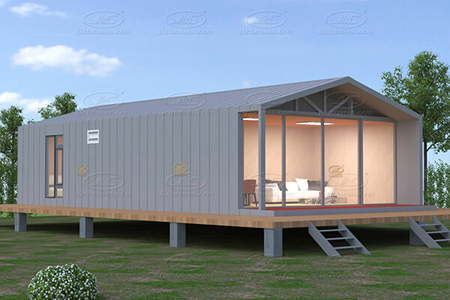


Copyright © 2019 JJC ENTERPRISE CO.,LTD. All Rights Reserved.

Leave a Reply
Your email address will not be published. Required fields are marked *